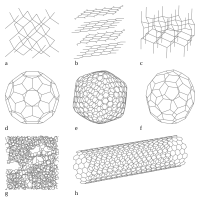
Photo from wikipedia
Background/Aim: This study aimed to establish a setup for ultra-high-dose-rate (FLASH) carbon-ion irradiation, and to conduct the first human cell experiments using FLASH carbon ions. Materials and Methods: A system… Click to show full abstract
Background/Aim: This study aimed to establish a setup for ultra-high-dose-rate (FLASH) carbon-ion irradiation, and to conduct the first human cell experiments using FLASH carbon ions. Materials and Methods: A system for FLASH carbon-ion irradiation (1-3 Gy at 13 or 50 keV/μm) was developed. The growth and senescence of HFL1 lung fibroblasts were assessed by crystal violet staining assays and senescence-associated β-galactosidase staining, respectively. Survival of HSGc-C5 cancer cells was assessed by clonogenic assays. Results: The dose rates of carbon ions ranged from 96-195 Gy/s, meeting the definition of FLASH. With both 13 and 50 keV/μm beams, no FLASH sparing effect was observed on the growth suppression and senescence of HFL1 cells, nor on the survival of HSGc-C5 cells. Conclusion: We successfully conducted the first human cell experiments with FLASH carbon ions. No FLASH effect was observed under the conditions examined.
Journal Title: AntiCancer Research
Year Published: 2022
Link to full text (if available)
Share on Social Media: Sign Up to like & get
recommendations!